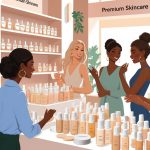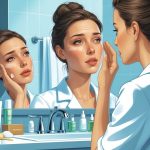Must-Have Sunscreens Quietly Adding Breakthrough Skin Benefits You’ll Notice Fast
Every morning, I’m rifling through a drawer stuffed with half-used SPF tubes, vowing I won’t buy a new one—yet I’m still side-eyeing EltaMD’s featherweight formula or Supergoop!’s mineral launch. Maybe it’s boredom with routines, or just that nagging sense that most sunscreens are the same old white cast in a fresh bottle.
But lately, I’m noticing a shift. Sunscreens aren’t just blocking rays—they’re loading up with niacinamide, squalane, or even zinc oxide that actually calms or balances my skin.
The latest mineral and chemical SPFs? They’re stacking up benefits like less oil, visible soothing, or extra hydration. Not just another layer to forget.
Brands like La Roche-Posay and Neutrogena love to shout “breakthrough” at me, but honestly, I care about what I see in the mirror. My skin’s less cranky after long days outside, those dry patches aren’t throwing tantrums, and I don’t dread midday shine when I use Dermalogica’s sheer option or that gel SPF from Paula’s Choice.
The goal isn’t just UVA/UVB protection anymore. I want multitaskers that handle redness, fine lines, or oil, but also blend in fast—no more standing around for 15 minutes, waiting for old-school chemical SPFs to disappear.
Half the reason I stick with these newer picks is the instant payoff. Matte finish in three seconds, not hours. No drama: if a sunscreen knocks out sunburn risk and breakouts, I notice, and I’m done pretending otherwise.
Why Sunscreen Is Essential for Every Skincare Routine
What really gets me about sunscreen? You don’t see most damage until it’s too late. That’s why I panic-bought La Roche-Posay’s Anthelios after reading some clinical review.
Those “moisturizer with SPF 15” bottles at the drugstore? They barely touch the issue if you’re outside much or even just walking to your car.
How UV Light Damages Skin
I learned the hard way: UV rays—UVA and UVB—mess up your skin in more ways than just a burn. UVA goes deep, breaking down collagen and elastin, quietly weakening your barrier.
UVB doesn’t go as deep, but it blasts DNA in your skin cells. That’s why dermatologists hate tanning beds even more than those sketchy “miracle” creams.
Here’s the mess I remember:
- UVA: Speeds up aging, triggers brown spots, makes pores look worse
- UVB: Burns, DNA mutations, stronger connection to skin cancers
All that silent inflammation? Skin ends up dull, rough, less bouncy. People act like a dewy finish comes from serums, but honestly, not skipping daily SPF has protected my skin barrier more than any niacinamide serum.
Daily SPF and Broad-Spectrum Protection
Every day, I try to ignore that voice telling me to reapply SPF—especially the “broad-spectrum” ones that claim to block both UVA and UVB. Some pharmacy brands—Neutrogena Ultra Sheer, Supergoop’s Unseen—finally get it, but way too many still don’t.
If you think winter or clouds mean you’re safe, think again. UV rays cut through car windows, clouds, whatever—undoing all your retinol or Vitamin C work.
SPF 30, minimum, as the last skincare step? That’s usually what keeps skin looking resilient, especially for my friends with melanin-rich complexions who still deal with dark spots. Oily skin? Gel formulas like Biore’s watery essence won’t break you out.
If you’ve ever flared up after a laser, broad-spectrum SPF isn’t optional. Your whole routine is kind of pointless without it.
Recognizing the Signs of Early Sun Damage
Spotting sun damage isn’t obvious. By the time you see sun spots, uneven patches, or those weird veins, the process has been rolling for years.
I didn’t even notice tiny freckles at my temples until a makeup artist pointed them out under a ring light.
Early signs that jump at me:
- Patchy pigmentation, especially around eyes and cheeks
- Surface redness or broken capillaries
- Rough or dry texture, even if you’re layering moisturizer
- Enlarged pores and new fine lines
These details get worse if you skip sunscreen, no matter how good your cleanser or antioxidant serum is. If I spot new dark spots or uneven tone, I know I’ve gotten lazy about reapplying EltaMD’s UV Clear—matte finish and all.
Skin isn’t just about night products; it’s about defending it all day, every day.
Breakthrough Benefits: More Than Just Sun Protection
I keep forgetting sunscreen’s basically become a weird extension of my skincare shelf. Less “generic white goop,” more “all-in-one serum with an SPF label.”
Some days, slapping on something that shields but also tackles dark spots, dryness, and redness feels like cheating. Other days, I just sigh when my La Roche-Posay or Supergoop runs out way too soon.
Advanced Hydrating Ingredients
Half the new SPFs I try claim to be “hydrating”—buzzword central—but there’s truth when they add hyaluronic acid or squalane. I swipe on Everyday Humans or Garnier’s Super UV Invisible Serum and my post-retinol, tight cheeks chill out.
Squalane—looking at you, Biossance—smooths out that rough, post-shower feeling. It’s like moisturizing without the greasy sunscreen flashback.
It’s not just the big names. Ceramides, aloe, even glycerin sneak into these formulas, actually helping on flights or under makeup. My forehead, usually the first to go red, stays calm when those ingredients show up.
If you’ve got ultra-dry skin, a dedicated hydrating SPF (look for “serum SPF” or “cream SPF” on shelves) saves you from layering three products before breakfast.
Barrier Strengthening and Repair
If I hear one more influencer yell “protect your barrier!” I might start throwing old CeraVe tubes. But, honestly, most new sunscreens are just as obsessed with ceramides and niacinamide as the internet is.
Using EltaMD or Eucerin’s SPF, which highlight barrier repair, I see fewer dry patches or flare-ups—even after a sweaty day outside.
Antioxidants like vitamin C or E slide right in, backing me up against car exhaust and not just UV. When my skin’s acting up from stress or a late night, SPFs with niacinamide actually help calm flare-ups and heal those under-the-surface bumps.
Sensitive types, you’ll want those formulas with aloe or other soothing extras. Not all of them get it right, but when they do, it’s a relief.



